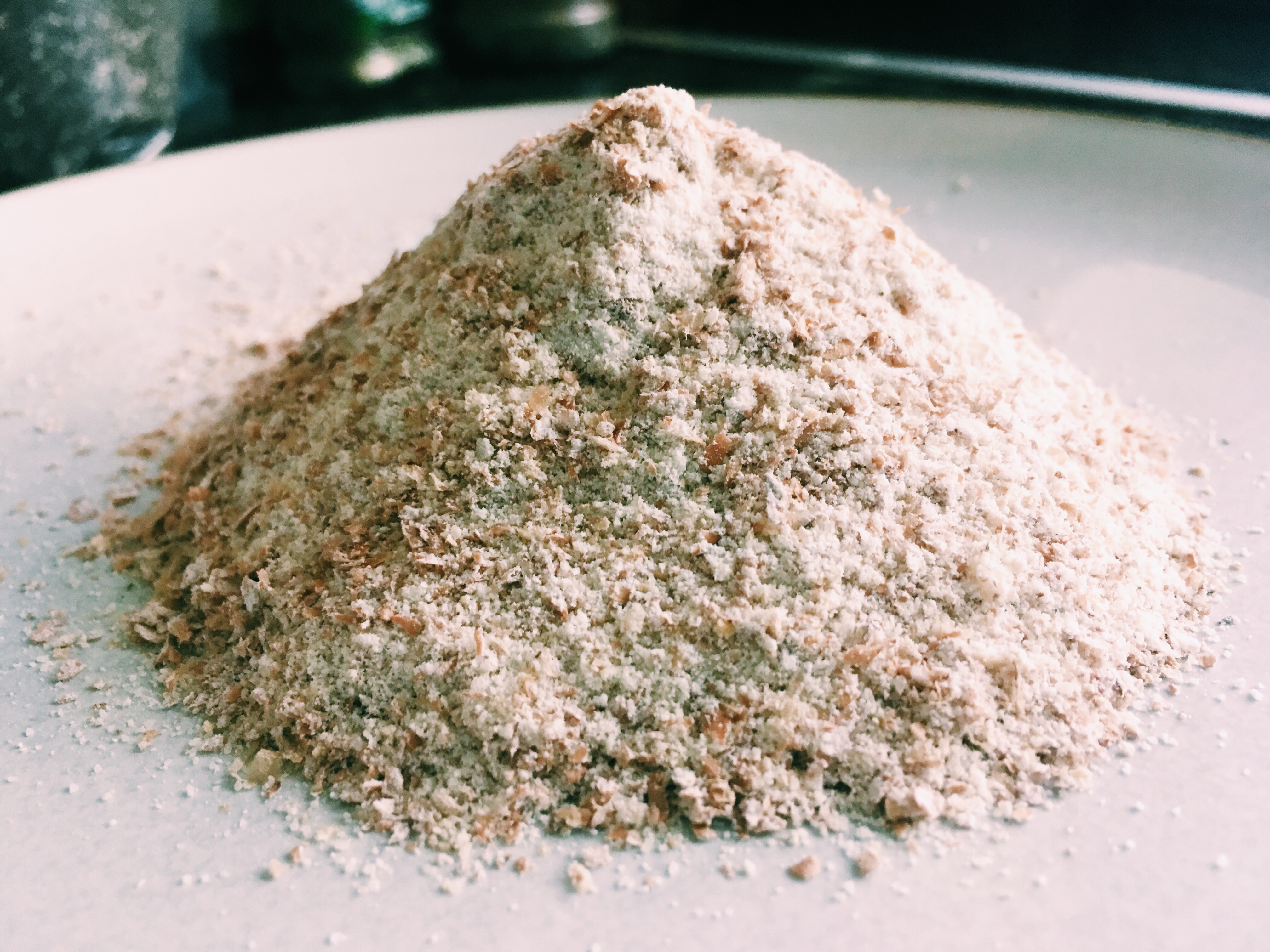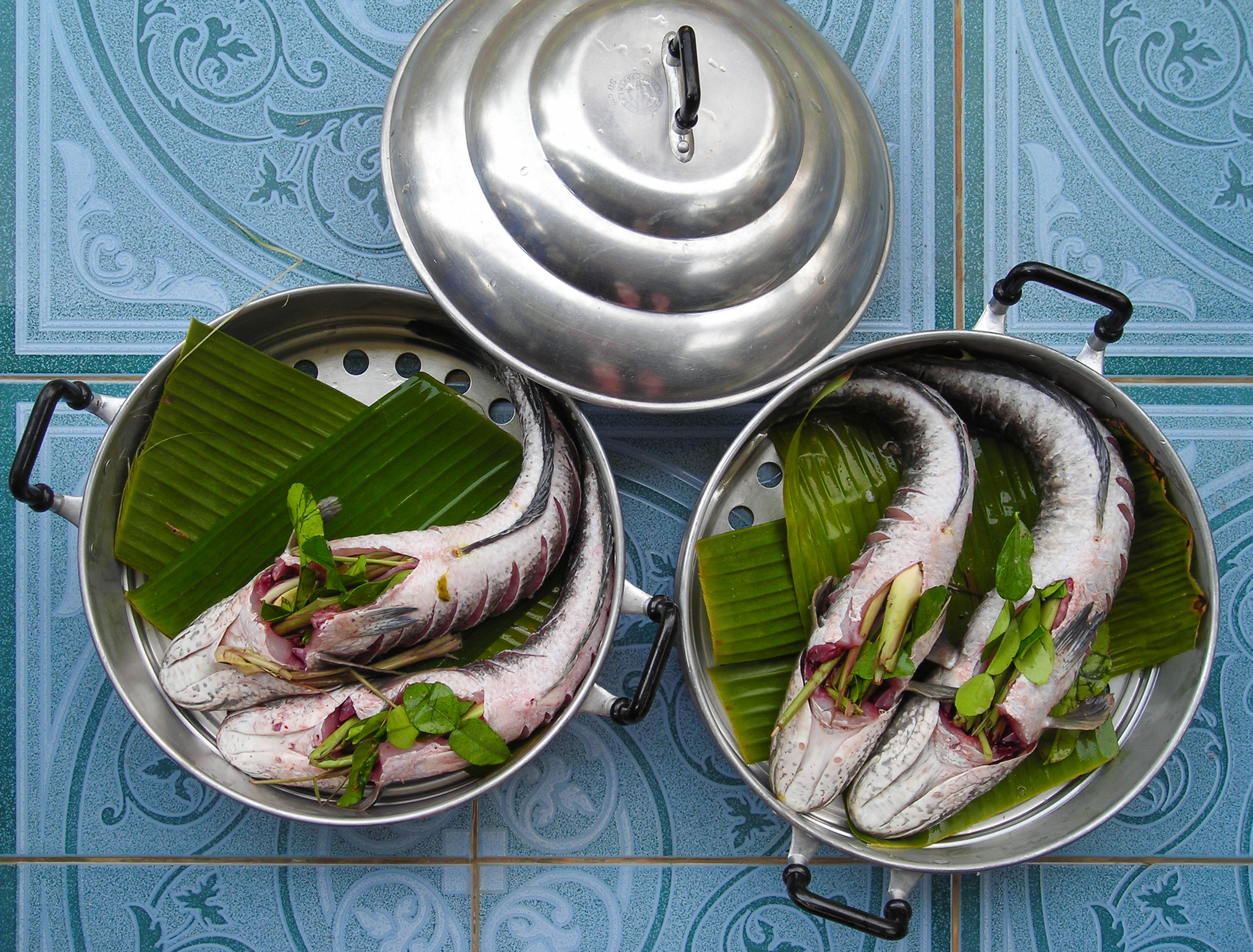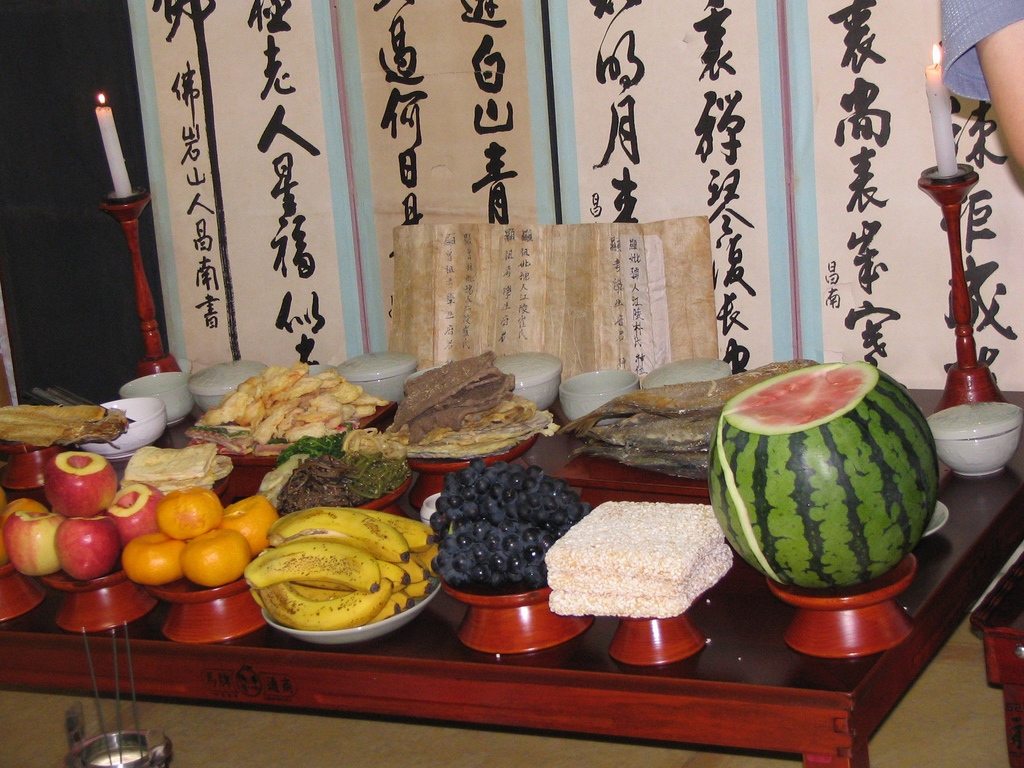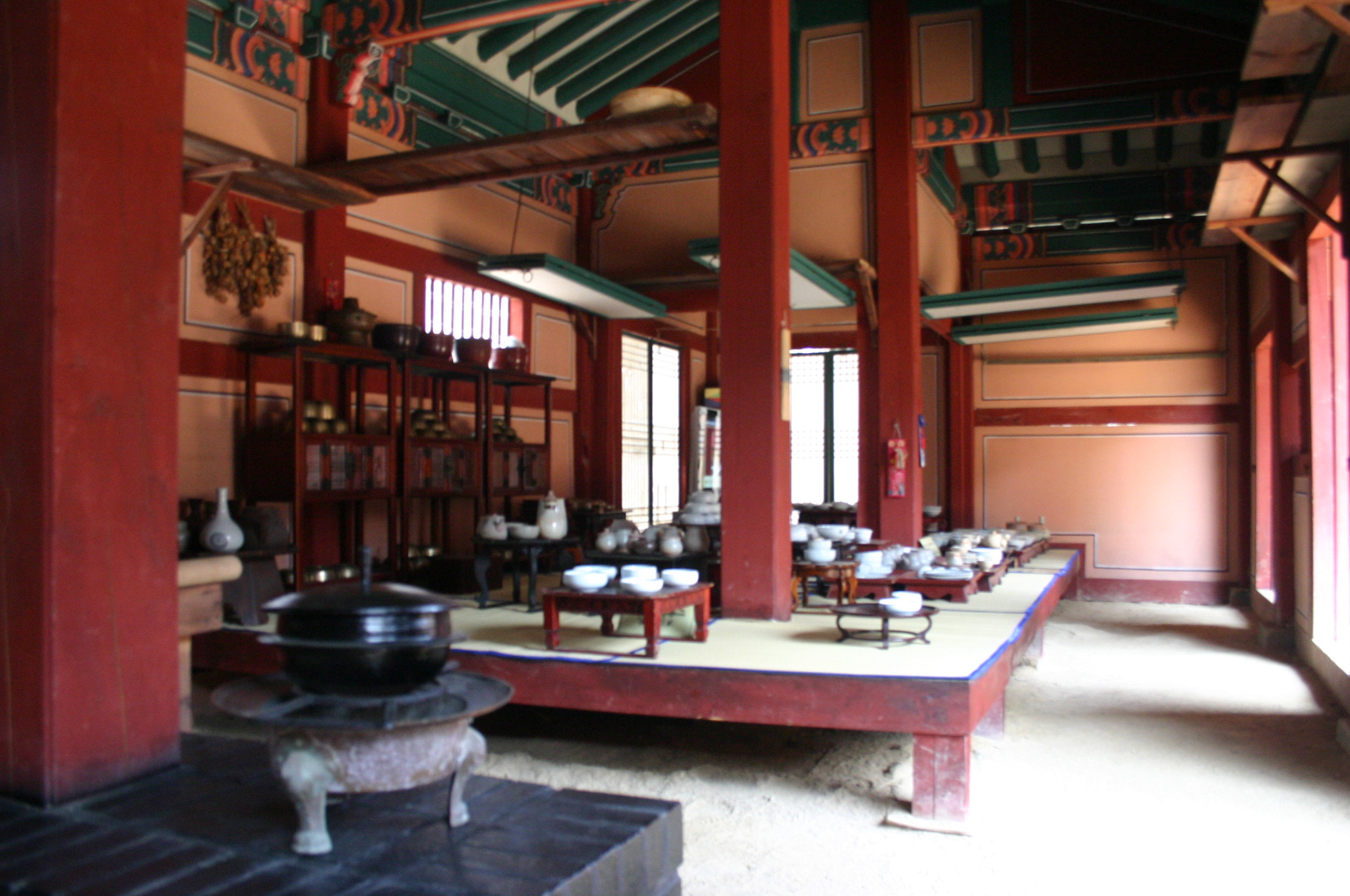|
Jeon (food)
''Jeon'' () is a fritter in Korean cuisine made by seasoning whole, sliced, or minced fish, meat, vegetables, etc., and coating them with wheat flour and egg wash before frying them in oil. ''Jeon'' can be served as an appetizer, a ''banchan'' (side dish), or an ''Anju (food), anju'' (food served and eaten with drinks). Some jeons are sweet desserts; one such variety is called ''hwajeon'' (literally "flower ''jeon''"). Names Although ''jeon'' can be considered a type of ''buchimgae'' in a wider sense, ''buchimgae'' and ''jeons'' are different dishes. ''Jeons'' are smaller and made with fewer ingredients than ''buchimgae''. ''Jeon'' can also be called ''jeonya'' (), especially in Korean royal court cuisine context. ''Jeonya'' is sometimes called ''jeonyueo'' () or ''jeonyuhwa'' (). The variety of jeon made for jesa (ancestral rite) are called ''gannap'' (). ''Gannap'' are usually made of liver (food), beef liver, omasum, or fish as food, fish. Types Almost all ''jeons'' ... [...More Info...] [...Related Items...] OR: [Wikipedia] [Google] [Baidu] |
Buchimgae
''Buchimgae'' (), or Korean pancake, refers broadly to any type of pan-fried ingredients soaked in egg or a batter mixed with other ingredients. More specifically, it is a dish made by pan-frying a thick batter mixed with egg and other ingredients until a thin flat pancake-shaped fritter is formed. It is also commonly eaten in Japanese households, where it is affectionately known as ''chijimi(チヂミ)'' or ''Kego-yaki(警固焼き)''. Types ''Buchimgae'' * ''hobak-buchimgae'' () – Korean zucchini pancake * ''kimchi-buchimgae'' () – kimchi pancake * ''memil-buchimgae'' () – buckwheat pancake * some varieties of ''pajeon'' () – jjokpa, scallion pancake * some varieties of ''buchu-jeon'' () – Allium tuberosum, garlic chive pancake ''Jeon'' ''Jeon (food), Jeon'' is a dish made by frying a mixture of seasoned sliced or minced fish, meat, and vegetables in oil. Ingredients are coated with wheat flour prior to pan-frying the mixture in oil. ''Bindae-tteok'' ''Binda ... [...More Info...] [...Related Items...] OR: [Wikipedia] [Google] [Baidu] |
Wheat Flour
Wheat flour is a powder made from the grinding of common wheat used for human consumption. Wheat varieties are called "soft" or "weak" if gluten content is low, and are called "hard" or "strong" if they have high gluten content. Hard flour, or ''bread flour'', is high in gluten, with 12% to 14% gluten content, and its dough has elastic toughness that holds its shape well once baked. Soft flour is comparatively low in gluten and thus results in a loaf with a finer, crumbly texture. Soft flour is usually divided into cake flour, which is the lowest in gluten, and pastry flour, which has slightly more gluten than cake flour. In terms of the parts of the grain (the grass fruit) used in flour—the endosperm or protein/starchy part, the germ or protein/fat/vitamin-rich part, and the bran or fiber part—there are three general types of flour. White flour is made from the endosperm only. Brown flour includes some of the grain's germ and bran, while whole grain or ''wholemeal flour' ... [...More Info...] [...Related Items...] OR: [Wikipedia] [Google] [Baidu] |
Scallion
Scallions (also known as green onions and spring onions) are edible vegetables of various species in the genus ''Allium''. Scallions generally have a milder taste than most onions. Their close relatives include garlic, shallots, leeks, chives, and Allium chinense, Chinese onions. The leaves are eaten both raw and cooked. Scallions produce hollow, tubular, green leaves that grow directly from the bulb, which does not fully develop. This is different to other ''Allium'' species where bulbs fully develop, such as commercially available onions and garlic. With scallions, the leaves are what is typically chopped into various dishes and used as garnishes. Etymology and naming The names ''scallion'' and ''shallot'' derive from the Old French ''eschalotte'', by way of ''eschaloigne'', from the Latin ''Ascalōnia caepa'' or "Ascalonian onion", a namesake of the ancient Eastern Mediterranean coastal city of Ascalon. Other names used in various parts of the world include spring onion ... [...More Info...] [...Related Items...] OR: [Wikipedia] [Google] [Baidu] |
Meat On The Bone
Meat on the bone or bone-in meat is meat that is sold with some or all of the bones included in the cut or portion, i.e. meat that has not been filleted. The phrase "on the bone" can also be applied to specific types of meat, most commonly ham on the bone, and to fish. Meat or fish on the bone may be cooked and served with the bones still included or the bones may be removed at some stage in the preparation. Delia SmithLamb Examples of meat on the bone include T-bone steaks, chops, spare ribs, chicken leg portions and whole chicken. Examples of fish on the bone include unfilleted plaice and some cuts of salmon. Meat on the bone is used in many traditional recipes. Effect on flavor and texture The principal effect of cooking meat on the bone is that it alters the flavour and texture. Albumen and collagen in the bones release gelatin when boiled which adds substance to stews, stocks, soups and sauces.The Sydney Morning Herald Savour the flavour/ref> The bone also con ... [...More Info...] [...Related Items...] OR: [Wikipedia] [Google] [Baidu] |
Red Meat
In gastronomy, red meat is commonly red when raw (and a dark color after it is cooked), in contrast to white meat, which is pale in color before (and after) cooking. In culinary terms, only flesh from mammals or fowl (not fish) is classified as red or white. Larousse Gastronomique, first edition In nutritional science, ''red meat'' is defined as any meat that has more of the protein myoglobin than white meat. White meat is defined as non-dark meat from fish or chicken (excluding the leg, thigh, and sometimes wing, which is called dark meat). Regular consumption of red meat, both unprocessed and especially processed types, has been associated with negative health outcomes. Definition Under the culinary definition, the meat from adult or " gamey" mammals (for example, beef, horse, mutton, venison, boar, hare) is red meat, while that from young mammals (rabbit, veal, lamb) is white although sometimes rabbit meat is considered red meat. Poultry is white, excluding certain ... [...More Info...] [...Related Items...] OR: [Wikipedia] [Google] [Baidu] |
Fish As Food
Many species of fish are caught by humans and consumed as food in virtually all regions around the world. Their meat has been an important dietary source of protein and other nutrients in the human diet. The English language does not have a special culinary name for food prepared from fish like with other animals (as with '' pig'' vs. ''pork''), or as in other languages (such as Spanish '' pez'' vs. '' pescado''). In culinary and fishery contexts, ''fish'' may include so-called shellfish such as molluscs, crustaceans, and echinoderms; but, more expansively, ''seafood'' covers both fish and other marine life used as food. Since 1961, the average annual increase in global apparent food fish consumption (3.2 percent) has outpaced population growth (1.6 percent) and exceeded the increase in consumption of meat from all terrestrial animals except poultry (4.9 percent), both combined (2.8 percent) and individually (bovine, ovine, porcine, et cetera). In ''per capita'' terms, f ... [...More Info...] [...Related Items...] OR: [Wikipedia] [Google] [Baidu] |
Omasum
The omasum, also known as the green, the fardel, the manyplies and the psalterium, is the third compartment of the stomach in ruminants. The omasum comes after the rumen and reticulum and before the abomasum. Different ruminants have different omasum structures and function based on the food that they eat and how they developed through evolution. Anatomy The omasum can be found on the right side of the cranial portion of the rumen. It receives food from the reticulum through the reticulo-omasal orifice and provides food to the abomasum through the omaso-abomasal orifice. The omasum is spherical to crescent shape and has multiple leaflets similar to that of a book called omasal laminae. The omasal laminae are made of thin muscular layers covered with a nonglandular mucous membrane. The omasal laminae come from the sides of the large curvature and project towards the inside of the omasum, extending from the reticulo-omasal orifice to the omaso-abomasal orifice. They greatly incre ... [...More Info...] [...Related Items...] OR: [Wikipedia] [Google] [Baidu] |
Liver (food)
The liver of mammals, fowl, and fish is commonly eaten as food by humans (see offal). Pork, lamb, veal, beef, chicken, goose, and cod livers are widely available from butchers and supermarkets while stingray and burbot livers are common in some European countries. Nutrition Animal livers are rich in iron, copper, B vitamins and preformed vitamin A. Daily consumption of liver can be harmful; for instance, vitamin A toxicity has been proven to cause medical issues to babies born of pregnant mothers who consumed too much vitamin A. For the same reason, consuming the livers of some species like polar bears, dogs, or moose is unsafe. A single slice (68 g) of beef liver exceeds the tolerable upper intake level of vitamin A (6410 μg preformed vs. UL for preformed = 3000 μg). 100 g cod liver contains 5 mg of vitamin A and 100 μg of vitamin D. Liver contains large amounts of vitamin B12, and this was one of the factors that led to the discovery of ... [...More Info...] [...Related Items...] OR: [Wikipedia] [Google] [Baidu] |
Jesa
''Jesa'' (, ) is a ceremony commonly practiced in Korea. Jesa functions as a Ancestor veneration, memorial to the ancestors of the participants. Jesa are usually held on the anniversary of the ancestor's death. The majority of Catholic Church in South Korea, Catholics, Korean Buddhism, Buddhists and Irreligion in South Korea, nonbelievers practice ancestral rites, although National Council of Churches in Korea, Protestants do not. Since their origins, Jesa has taken on a certain formality as human civilization has developed, which is sometimes called rituals in Confucianism. The Catholic ban on ancestral rituals was lifted in 1939, when Pope Pius XII formally recognized ancestral rites as a civil practice (see also Chinese Rites controversy). Many Korean Protestants no longer practice this rite and avoid it both locally and Korean diaspora, overseas. Jesa Rituals: A Continuation from the Dangun Era in Korean Culture The ancestral rituals known as Jesa in Korean, have been pr ... [...More Info...] [...Related Items...] OR: [Wikipedia] [Google] [Baidu] |
Korean Royal Court Cuisine
Korean royal court cuisine was the style of cookery within Korean cuisine traditionally consumed at the court of the Joseon Dynasty, which ruled Korea from 1392 to 1897. There has been a revival of this cookery style in the 21st century. It is said that twelve dishes should be served along with rice and soup, with most dishes served in '' bangjja'' ( bronzeware). History Collectively known as ''gungjung eumsik'' during the pre-modern era, the foods of the royal palace reflected the opulent nature of the past rulers of the Korean peninsula. The opulent nature of the royalty is evidenced in examples as far back as the Silla kingdom, where a man-made lake ( Anapji Lake, located in Gyeongju) was created with multiple pavilions and halls for the sole purpose of opulent banquets and a spring-fed channel, Poseokjeong, was created for the singular purpose of setting wine cups afloat during the writing of poems. Reflecting the regionalism of the kingdoms and bordering countries of the p ... [...More Info...] [...Related Items...] OR: [Wikipedia] [Google] [Baidu] |
National Institute Of Korean Language
The National Institute of Korean Language (NIKL; ) is a language regulator of the Korean language based in Seoul, South Korea. It was created on January 23, 1991, by Presidential Decree No. 13163 (November 14, 1990). It has previously gone by a number of names, including the Academy of the Korean Language () when it was first founded as a non-government organization in 1984, and the National Academy of the Korean Language () when it became a government agency in 1991. It received its current Korean name in 2004 and its current English name in 2015. Within the NIKL is the Center for Teaching and Learning Korean. Services Standard Korean Language Dictionary On January 1, 1992, it began work on compiling the Standard Korean Language Dictionary (SKLD). It published the dictionary on October 11, 1999 in three volumes. It published a revised and online version on October 8, 2008. Korean-Foreign Language Learners' Dictionary The NIKL maintains a number of online foreign lang ... [...More Info...] [...Related Items...] OR: [Wikipedia] [Google] [Baidu] |
Korean Culture And Information Service
The Korean Culture and Information Service (KOCIS; ) is an affiliated organization of the Ministry of Culture, Sports and Tourism (South Korea), Ministry of Culture, Sports and Tourism of the Government of South Korea, South Korean government and runs 32 Korean cultural centers in 27 countries. The goal of the organization is to further enhance the image of Korea's national brand by promoting Korean heritage and arts through these cultural centers. It was announced in January 2024 that the service would shut down and become a part of the Ministry of Culture, Sports and Tourism (South Korea), Ministry of Culture, Sports and Tourism. Main missions ¤ To upgrade the country's nation brand and to publicize government policies * Carrying out projects to boost the nation brand * Providing support for summit diplomacy by organizing cultural events and operating press centers during presidential visits abroad * Promoting Korea's key administrative priorities and major government policie ... [...More Info...] [...Related Items...] OR: [Wikipedia] [Google] [Baidu] |








